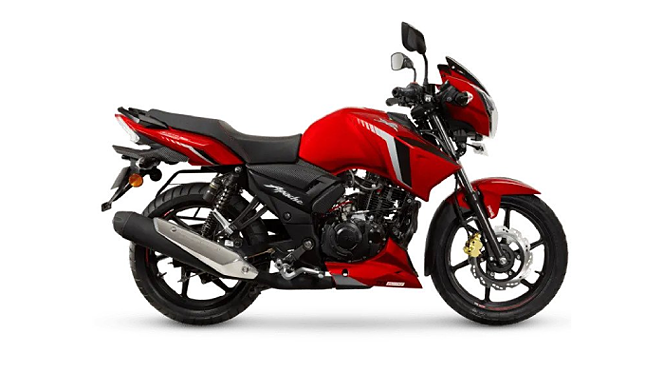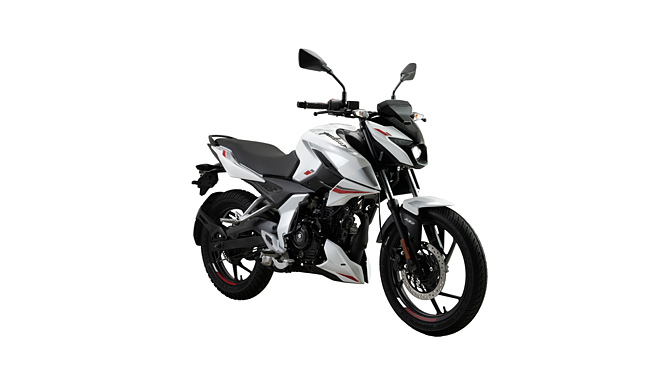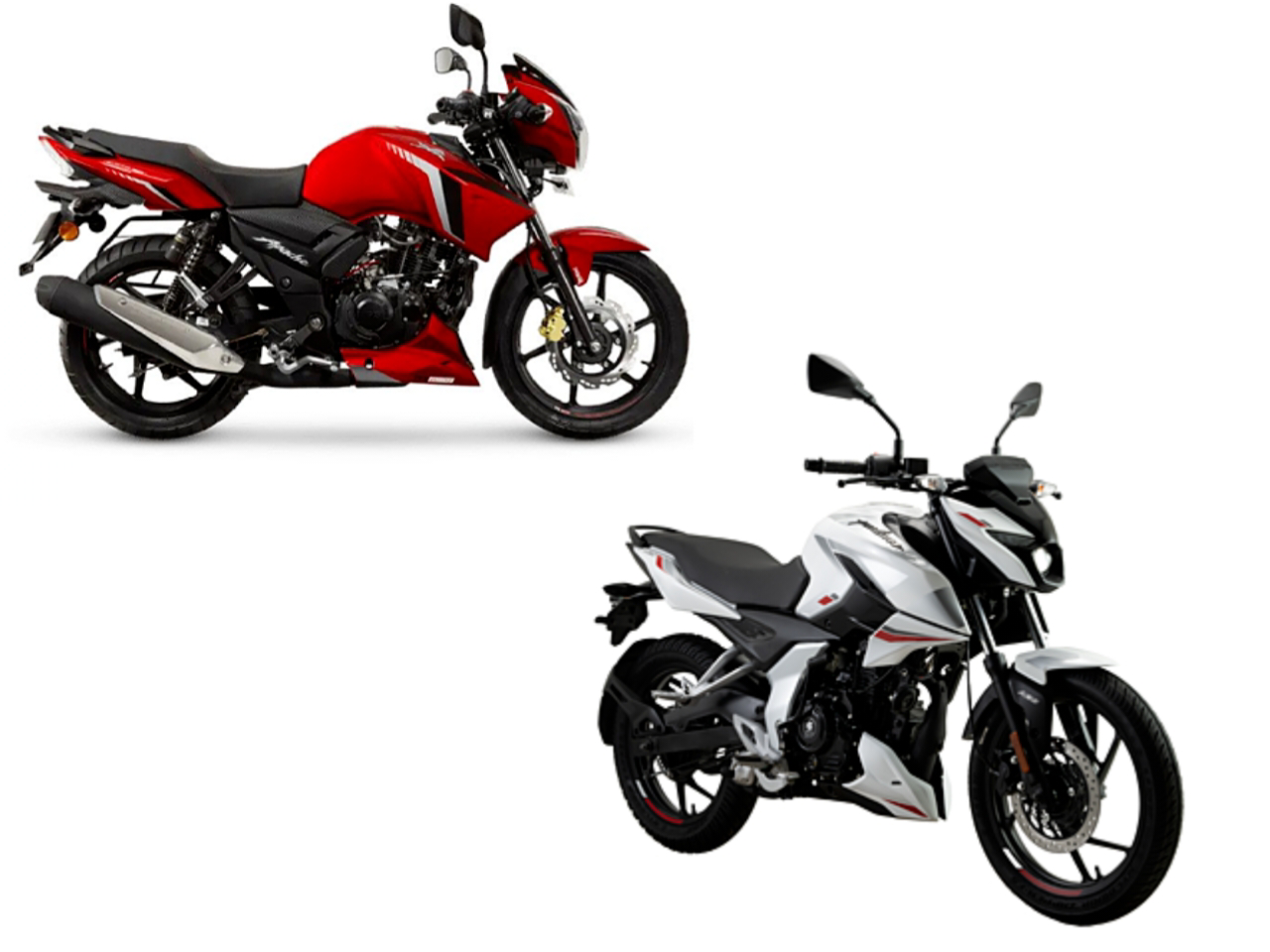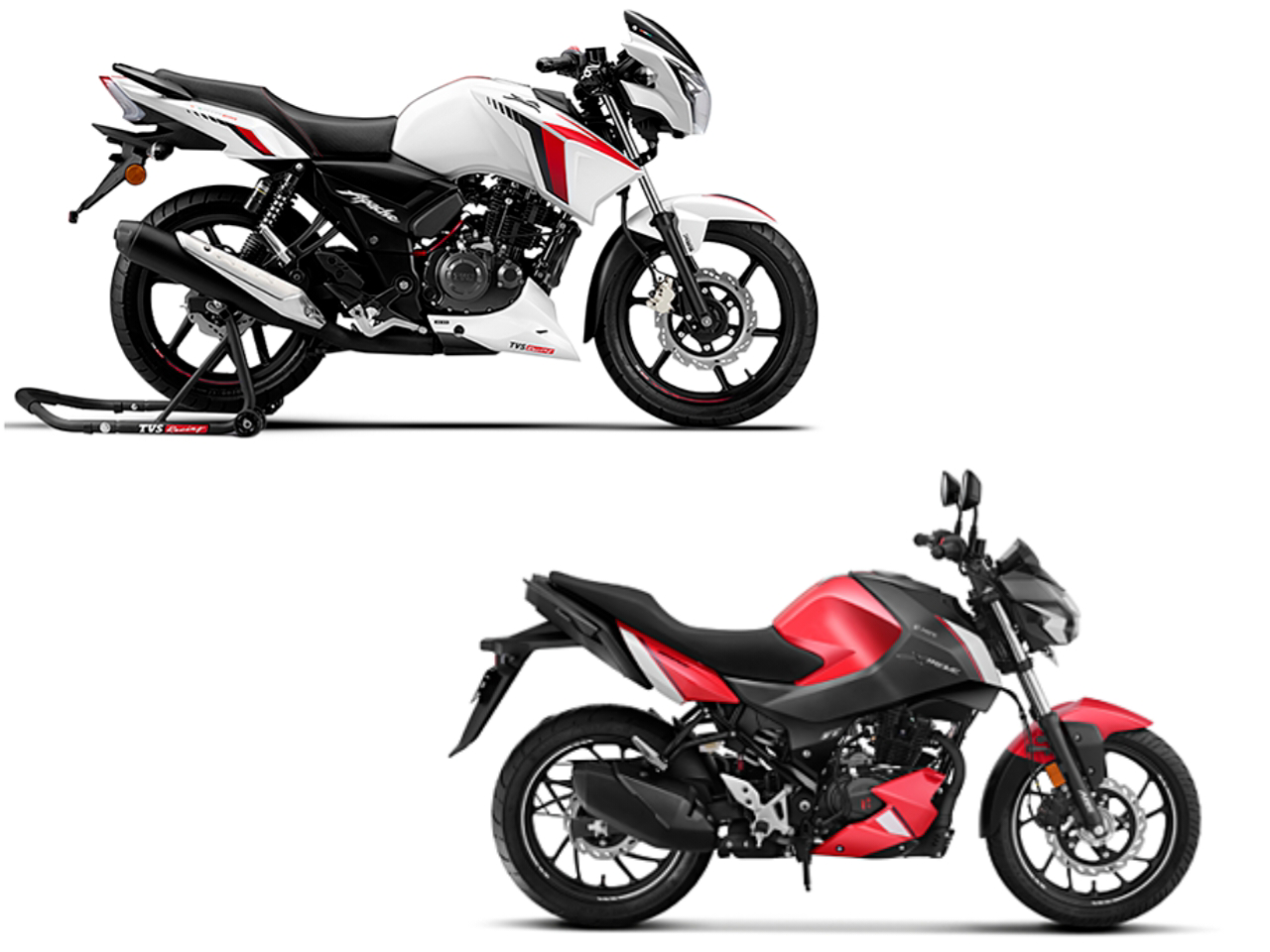Bajaj Pulsar N150 vs TVS Apache RTR 160: A lot of bikes with sporty looks and ABS characteristics are demanding nowadays. Even though many bikes with these features are highly expensive. ABS is to prevent a motorcycle’s wheel or wheels from locking up while braking. ABS uses sensors on both wheels to measure wheel speed precisely and sensors to determine when a wheel is about to lock. Here, the ABS-equipped Bajaj Pulsar N150 and TVS Apache RTR 160 motorcycles are compared. Let’s go over these models’ specs to help you choose the perfect bike more easily.
Bajaj Pulsar N150 vs TVS Apache RTR 160: Specifications

TVS Apache RTR 160
| Specs | Bajaj Pulsar N150 | TVS Apache RTR 160 |
| Braking system | Single Channel ABS | Single Channel ABS |
| Front brake typr | Disc | Disc |
| Engine | 149.68 cc | 159.7 cc |
| Cylinder | 1 | 1 |
| Power | 14.3 bhp | 15.82 bhp |
| Torque | 13.5 Nm | 13.85 Nm |
| Mileage | 49 kmpl | 45 kmpl |
| Fuel Tank capacity | 14 litre | 12 litre |
| Transmission | 5 Speed Manual | 5 Speed Manual |
| Kerb weight | 136 kg | 137 kg |
| Price | Variant – Single Disc Rs. 1,18,443 Avg. Ex-Showroom price | Variant – RM Drum Rs. 1,19,985 Avg. Ex-Showroom price |

Bajaj Pulsar N150
Know more about the differences
The Bajaj bike incorporates LED lighting and a semi-digital instrument console with readouts for the trip metre and fuel level indication. It also includes speedometer, odometer, clock and other functions. Subsequently, a side-stand cut-off sensor and a single-channel ABS comprise the safety measures. However, the TVS motorcycle has a longer list of features than the previous model, which included a halogen headlight on the front replaced with an LED DRL. In this, it comes with fully digital instrument cluster with a revised user interface, a slipper clutch, dual-channel ABS, and three ride modes (rain, urban, and sport).
Keep watching our YouTube Channel ‘DNP INDIA’. Also, please subscribe and follow us on FACEBOOK, INSTAGRAM, and TWITTER.












